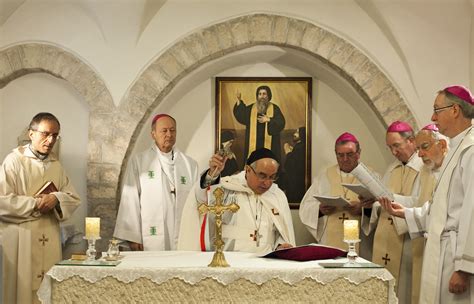In their Introduction to Eastern Christian Liturgies (Liturgical Press, Collegeville, 2022) Alexopoulos and Johnson define “rite” as follows:
A rite is a unique and integrated system of worship with its own rules and inner system conditioned by history, culture, theological outlook, and it embodies that tradition’s official expression of its Christian faith … in the East there are today seven extant liturgical rites: Armenian, Byzantine, Coptic, Ethiopian, East Syrian, West Syrian, and Maronite. (xv)
They say that the Eastern liturgies show phases of development, which they characterise as follows (xxi):
- Up until Constantine the Great. They say in this era there was considerable variety in practice but also some regularisation in and around major centres.
- Fourth to seventh centuries. They see growth and differentiation now, with greater unity only in particular areas.
- From the eighth century. Liturgical families are found, which spread “recognizable formed traditions,” e.g. the Byzantine Rite being planted in the Balkans and Kievan Rus.
- The invention of the printing press, which “dramatically slows won the process of liturgical evolution, as the copy of the same original is diffused to a wide geographical area, thus eliminating local ritual expression and creativity.”
- The 20th and 21st centuries, which have forced the Eastern liturgical traditions to engage with modernity. (xxii)
I am not saying that point 4 is historically incorrect, but to assert that because there are printed books one will “eliminate” local usages and expressions, is going too far. First, it depends on what the books say: they may provide for options, and may even encourage improvisation. One only has to consider the printed text of the Latin Novus ordo which has hardly standardised liturgies. Further, it must depend on what the clergy and people do. It is difficult to stop changes being made, at least where there players with for it. The history of liturgical development is often the history of such unauthorised changes. Alexopoulos and Johnson continue:
Liturgy is not just texts, rites, and rituals; it is encountering the mystery of God, the now-and-not-yet of the Christian experience; it is the visible expression of the faith of a community; the incarnation of the Christian message in a particular time, place, culture, and people. … the different rites express particular cultural incarnations of a people at prayer. For liturgy is at their centre as it expresses their faith, their life, their spirituality, their piety, their heritage, and their experience of God. (xxiv)
When they say that the liturgy is “encountering the mystery of God,” and we meet with many such statements in liturgical studies, I would add that this is the ideal. Part of the problem facing the Church today is that many people do not have such an encounter, at least not in any palpable way, and while many persevere because of their faith, the reality is that for many people the liturgy is an approach to, and a worshipping of God, but to say the mystery has been encountered, if those words are to mean anything, is too say too much. Many of those who do not have the experience they wish for either lose the faith turn to movements like the charismatic and pentecostal.
Alexopoulos and Johnson acknowledge that the Eucharistic liturgy is central, and add that Scripture is indirectly taught through worship, for Scripture infuses the whole of Eastern worship. (xxiv) Speaking of the Eastern liturgical culture, they say that:
Among Eastern Christians there is a sense of ownership of their liturgical tradition that connects them with their historical, cultural, and theological roots as a community. There is also the awareness of the responsibility to hand their tradition down to the coming generations. In these communities clergy have a role of liturgical, spiritual, and communal leadership. Eastern Christians have a very strong sense of community, fostered by the communal liturgical celebrations” (xxiv)
They quote Taft to the effect that the Eastern liturgy: “… is transcendent but not distant, hieratic but not clericalized, communal but not impersonal, traditional but not formalistic.” (xxiv)
Alexopoulos and Johnson also make what is, I think, a most significant point, that “… the Eastern Churches have not experienced the Renaissance, the Reformation, and the Enlightenment …” (xviii) On the other hand, they have and often still do persevere through persecution. Hence, the martyrs of the past and present inspire the modern Eastern Church Churches and thus give: “a strong eschatological flavour to their liturgy and spirituality.” (xxiv) I think that the significance of this is found in the fact that, by and large, the Maronite Church never lost its self-confidence the way it seems to me that the Latin Church did. The self-doubt of the Latin Church became even worse after WWI and especially WWII, when European values lost their boasting rights, so to speak.

Bare5mōr Abouna Yuhanna,
If you don’t mind me asking, did the Maronites ever use ripidia during the divine liturgy at any point in history? I noticed that they used them during the golden Jubilee Mass in Sydney. Would that imply that they are only used for special occasions and would they ever be used on a regular basis in Maronite churches (is it a tradition to be revived)? Thank you and God bless.
Certainly they have been used in the Maronite liturgy, but I have no specific information on how ancient it is, Wahid. I don’t think anything is implied, or anything is implied about their future use. But WE SHALL SEE. Yours in Christ
Thank you father.